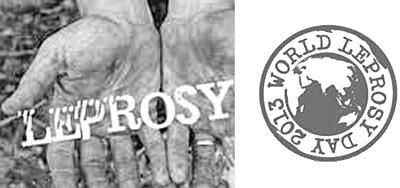De-stigmatisation and restoration of dignity to those who suffer

No other disease causes as much stigma -- no other disease is used to describe the person that is attacked by it -- as leprosy. People called, and still many call, a person affected by leprosy "a leper." In Bangla, they are termed as kushthi. Nothing can be more derogatory like this! Do we call a man suffering from jokkha (Tuberculosis) a jokkhi or something as offensive? No other disease renders a man suffering from any illness, stigmatising them even after he or she has been cured of leprosy.
Today in World Leprosy Day, people and concerned organisations in different countries are observing this day with various programmes with the purpose of enhancing public awareness about the truth on this still-stigmatised health hazard.
In Bangladesh we can celebrate the fact that our parliament repealed the century-old prejudicial Lepers Act 1898 on November, 24, 2011. There should be officially nothing against the human rights of people affected by leprosy. Those affected continue to get deprived of their basic rights and the letters of the repealing law do not ensure the removal of the social stigma from the minds of the man on the street overnight.
The spirit that lies behind the repeal needs to be internalised by all concerned for the desired positive change. Stigma of leprosy continues to produce fear in the popular minds. Stigma is a hydra-headed monster and it creates a sense of shame, a sense of guilt and self-stigma in the minds and hearts of those very affected people.
All these, in turn, push those who are affected to often hide their disease, which lie behind all poor consequences in the form of disfigure and deformity in the absence of right treatment in time. The said obsolete Act was useful when there was no scientific medication for leprosy, which came be to available only during the 80s of the 20th century when WHO invented the only scientific cure, the Multi Drug Therapy (MDT).
MDT has revolutionised the leprosy scenario all over the world by a dramatic reduction in the number of cases of people affected by the disease in thousands. Community attitudes are part of a cultural belief and value system. Attitudes are powerful determinant of stigma. Both the government and non-government organisations need to continue to dispel the wrong notions about leprosy and publish the latest truth about the disease: that leprosy is not a curse, it is not a result of sin, and it is curable with modern medicine which is feely available, and that there is no place for social exclusion because of leprosy.
These truth needs to be continually published by mass media.
Leprosy is a human development issue. Poverty, malnutrition and lack of adequate sanitation serve as a cause of leprosy. The WHO target of 1 per 10,000 to being the normal situation needed to be achieved by the year 2000 was accomplished in Bangladesh on the national scale by 1998.
However, there have been several pockets of leprosy prevalent in the country where the target is yet to be achieved. These areas are primarily some of the districts in the north-west in the country, in slums of Chittagong and Dhaka metropolitan cities, tea gardens in greater Sylhet areas, etc.
Public awareness and sensitising the policy makers will help in the process of advocating for and the promotion of the human rights and dignity of the leprosy affected people. So awareness should lead to accessibility.
Building awareness about the disease is carried out by organisations working with and for the affected people in Bangladesh among the community people, who need to be educated that leprosy is a physical disease like other diseases.
In the entire process, community participation is important for the cause of the rehabilitation of the leprosy victims into their community. All people, government agencies or non-government organisations should own the goal of a leprosy-free Bangladesh.
The following are important in order that the causes and consequences of leprosy is eradicated from Bangladesh and a leprosy-free Bangladesh is achieved:
-Continued intensive and both vertical and horizontal leprosy care is ensured;
-Integration of leprosy treatment at general or government health institutions ensured; and
-Adequate education on leprosy and its medical care should be included in the MBBS and Nursing training curricula.
The preamble to the Universal Declaration of Human Rights adopted in 1948 recognises "the inherent dignity" and "the equal and inalienable rights of all members of the human family" as the foundation for freedom, justice and peace in the world.
When we want to advocate for the rights of the people with leprosy, we need to seriously speak up and draw the attention of the society to this important issue with the ultimate objective of directing decision-makers toward a measureable solution.

 For all latest news, follow The Daily Star's Google News channel.
For all latest news, follow The Daily Star's Google News channel. 




Comments